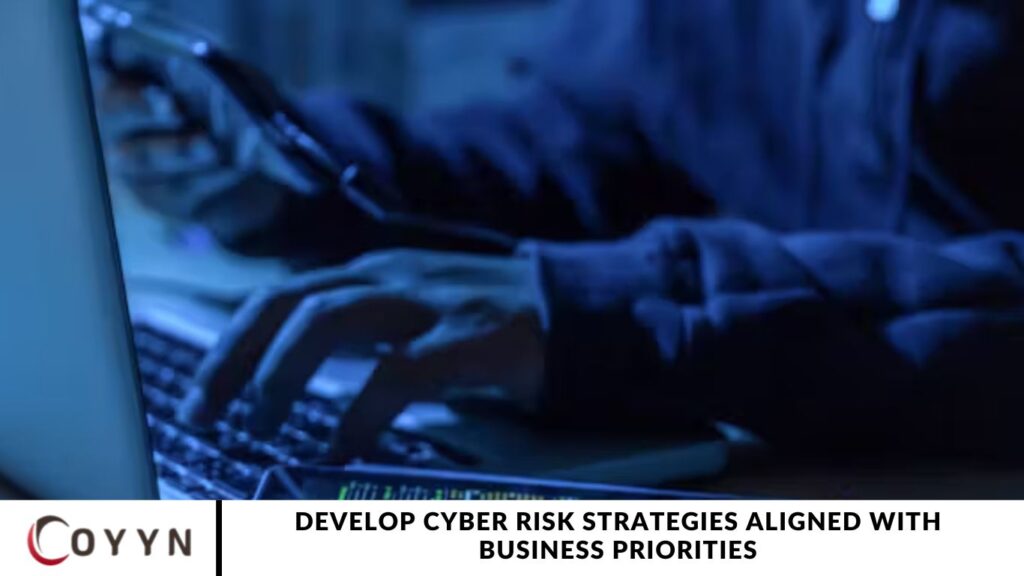Drive Cybersecurity Accountability and Foster a Cyber-First Culture to Enable Business Transformation and Accelerate Enterprise Growth.
Cyber threats are not just IT issues — they are critical business risks. To safeguard operations, reputation, and growth, organizations must move beyond reactive security measures and strategically integrate cyber risk management into their broader business objectives. Developing cyber risk strategies that align with business priorities ensures that cybersecurity efforts not only protect critical assets but also empower innovation, resilience, and long-term success. This approach bridges the gap between technical defenses and executive decision-making, turning cybersecurity into an actual business enabler.
- Why cyber strategy matters
- What you can do
- Protect Your Organization from Deepfakes to Strengthen Trust and Build Resilience
- Promote Cybersecurity Accountability Across the Organization
- Quickly Adapt to Evolving Regulations
- Foster a Cybersecurity-First Culture to Drive Secure Growth
- Enable Business Transformation Through Cybersecurity Alignment
- Manage Cyber Risk and Compliance as a Service
- Why Organizations Should Understand Their Cybersecurity Risk
- Frequently Asked Question
- Why is aligning cyber risk strategies with business priorities important?
- How can we assess our organization’s current cyber risk posture?
- What are the key components of an effective cyber risk strategy?
- How do we prioritize cybersecurity risks in alignment with business goals?
- What role do business leaders play in cyber risk management?
- How can we ensure continuous improvement in our cyber risk strategy?
- What tools and technologies can support a cyber risk strategy?
- Conclusion
Why cyber strategy matters
Cybersecurity today extends far beyond the IT department — it’s a core business imperative. With new threats emerging daily, organizations face increasing risks of operational disruption and costly breaches. By embedding cybersecurity into your overall business strategy, you can proactively minimize risks, strengthen resilience, and safeguard your organization’s future. Prioritizing cybersecurity isn’t just about defense — it’s about enabling confident growth and sustainable success.
Grow with confidence
Many CEOs recognize cybersecurity as critical to business growth yet remain uncertain about their organization’s ability to defend against cyberattacks.
What you can do
Protect Your Organization from Deepfakes to Strengthen Trust and Build Resilience
As deepfake technologies grow more advanced and widespread, organizations must take proactive steps to defend against these evolving threats. Strengthening defenses requires a strategic blend of advanced security capabilities, robust controls, and comprehensive employee education and awareness programs. Acting swiftly is essential to safeguarding organizational trust, maintaining resilience, and minimizing potential risks.
Promote Cybersecurity Accountability Across the Organization
Embed shared responsibility for cyber risk in your board, cybersecurity teams, and business leaders to enhance collaboration. Move beyond relying solely on the CISO and establish clear, organization-wide cybersecurity accountability to strengthen resilience and support business objectives.
Quickly Adapt to Evolving Regulations
Ensure compliance with complex laws, regulatory requirements, and risk tolerances across your organization, regardless of the industry or geography in which you operate.
Foster a Cybersecurity-First Culture to Drive Secure Growth
Attract and retain top cybersecurity talent while delivering targeted training to boost threat awareness and responsiveness. Prioritize investments in areas of high behavioral risk to strengthen your organization’s security posture and accelerate sustainable growth.
Enable Business Transformation Through Cybersecurity Alignment
Integrate cybersecurity strategies with business objectives to accelerate transformation, drive innovation, and support sustainable growth.
Manage Cyber Risk and Compliance as a Service
Cut costs and streamline operations by implementing efficient security solutions to meet your risk and compliance requirements.
Why Organizations Should Understand Their Cybersecurity Risk

Enterprise security leaders must effectively understand and manage cybersecurity risk to reduce the impact and likelihood of cyberattacks. This starts with recognizing the connection between vulnerabilities, threats, and potential consequences.
Effective risk management involves identifying, prioritizing, mitigating, and continuously monitoring cyber risks. This iterative process is key to minimizing the likelihood and severity of cyberattacks. It empowers organizations to:
- Implement robust controls to safeguard critical assets from breaches and attacks.
- Avoid costly, ineffective security measures that may disrupt business operations.
- Develop targeted strategies to respond to emerging risks.
- Prioritize risks based on their likelihood and potential impact.
- Make informed, priority-driven decisions to manage risks effectively.
Frequently Asked Question
Why is aligning cyber risk strategies with business priorities important?
Aligning cyber risk strategies with business priorities ensures that cybersecurity efforts are directly tied to the organization’s goals. This minimizes risks that could hinder growth while maximizing the protection of critical assets.
How can we assess our organization’s current cyber risk posture?
Begin by evaluating existing cybersecurity policies, identifying vulnerabilities, conducting threat assessments, and understanding how potential risks could impact business operations and strategic objectives.
What are the key components of an effective cyber risk strategy?
An effective strategy includes risk identification, assessment, prioritization, mitigation planning, continuous monitoring, and alignment with business objectives to protect both digital and physical assets.
How do we prioritize cybersecurity risks in alignment with business goals?
Risks should be prioritized based on their potential impact on key business operations, revenue streams, reputation, and regulatory compliance. A risk-based approach ensures the most critical threats are addressed first.
What role do business leaders play in cyber risk management?
Business leaders must actively participate in developing and supporting cyber risk strategies. They must ensure that cybersecurity aligns with business priorities and fosters a culture of shared accountability across departments.
How can we ensure continuous improvement in our cyber risk strategy?
Regular risk assessments, feedback loops from stakeholders, and policy updates based on evolving threats and business needs are essential for keeping a cyber risk strategy relevant and effective.
What tools and technologies can support a cyber risk strategy?
Leveraging security frameworks, risk management software, threat intelligence platforms, and automation tools can enhance risk identification, response, and mitigation efforts.
Conclusion
Aligning cyber risk strategies with business priorities is no longer optional — it’s essential for long-term success and resilience. By integrating cybersecurity into the core of your business strategy, you can proactively address emerging threats, protect critical assets, and support business growth. This alignment ensures that your cybersecurity measures not only mitigate risks but also drive efficiency, innovation, and competitive advantage. A well-defined, business-centric cyber risk strategy empowers organizations to adapt swiftly, manage risks effectively, and make informed decisions that safeguard both their future and reputation.


